1288 Burrs and bullet trains
Design Like Nature: Biomimicry for a Healthy Planet
by Megan Clendenan and Kim Ryall Woolcock
Victoria: Orca Books, 2021
$19.95 / 9781459824645
Reviewed by Jocie Brooks
*
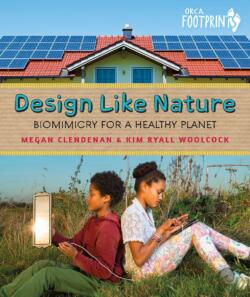 I opened this book while sitting at the kitchen table beside the head of a giant sunflower cut from my garden, full of seeds ready for harvest. The spiralling pattern of seeds reflects a mathematical pattern known as the Fibonacci sequence, which allows the plant to pack in as many seeds as possible. Similar patterns are found in pineapples and pine cones. Fascinating, and one of many things that I learned from this interesting book.
I opened this book while sitting at the kitchen table beside the head of a giant sunflower cut from my garden, full of seeds ready for harvest. The spiralling pattern of seeds reflects a mathematical pattern known as the Fibonacci sequence, which allows the plant to pack in as many seeds as possible. Similar patterns are found in pineapples and pine cones. Fascinating, and one of many things that I learned from this interesting book.

Design Like Nature is intended for a young audience and explores the theme of biomimicry; how humans copy nature to solve problems and protect the planet. Examples are given of natural materials used through human history, such as purple dyes from snails and cochineal insects, Greek armour made from layers of linen, and toothbrushes made from the rough stems of the horsetail plant.
Natural materials are contrasted with synthetic, or non-natural materials, such as polyester used to make things like nylon parachutes and rain jackets, which produce waste that takes a very long time to break down. The authors don’t shy away from the fact that human dependence on fossil fuels and toxic materials is creating huge problems for our planet — 350 million tons of plastic and 55 million tons of electronic waste per year are sobering statistics! Despite these dire figures, the authors have an overall positive tone throughout the book, encouraging young readers to engage with nature, and to see nature as a teacher who can guide us through human challenges, inspiring new generations of scientists, engineers and inventors.
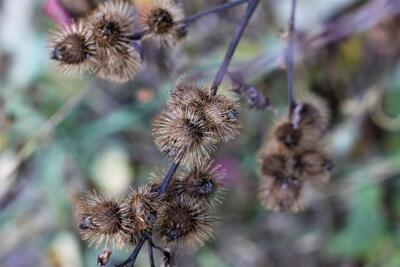
The authors delve into inventions inspired directly by nature, such as Velcro, an idea which came from plant seeds (burrs) that stick to clothing and dog hair. Scientists strive to come up with non-toxic materials that mimic naturally occurring things, such as the super-strong abalone shell, the adhesive power of mussels, or the tough thread of spider silk, the latter even being used to make violin strings. One engineer turned to birds, designing a bullet train like the bill of a kingfisher, noting that the kingfisher was able to dive into the water without creating a ripple.
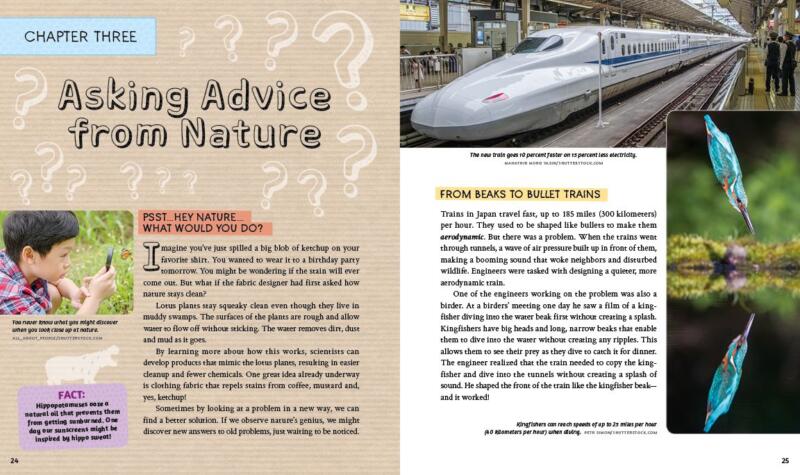

Nature is redefining our cities and infrastructure also. In India, living bridges are made from the intertwining branches of rubber trees. Living walls and roofs are made from plants. Low energy fridges have been created, modelled on the cool interior temperature of termite mounds. Vertical wind turbines have been placed close together, creating a vortex effect similar to a school of fish moving through the water.
This book is full of information that will be of interest to children and adults alike. Examples of biomimicry are given from all over the world, giving the book a broad scope that is not location-specific. Children are also given examples of things they can do, such as composting old cotton jeans, or taking an “old fashioned” lunch to school that does not have any packaging.
There are a few minor things that bother me about this otherwise engaging book. The cover shows a boy holding a solar panel, connected to a device that a girl is peering into. Despite the fact that these kids are outside, they seem disconnected from the natural world around them. Though the pictures are well chosen, they don’t always connect with the text. For example, the paragraph on slime mould would be more impactful with an accompanying photo. I did note one error — horsetail is called a “type of reed.” Horsetail is actually an ancient vascular plant that reproduces by spores, not seeds, and it is not related to reeds, which are grasses.
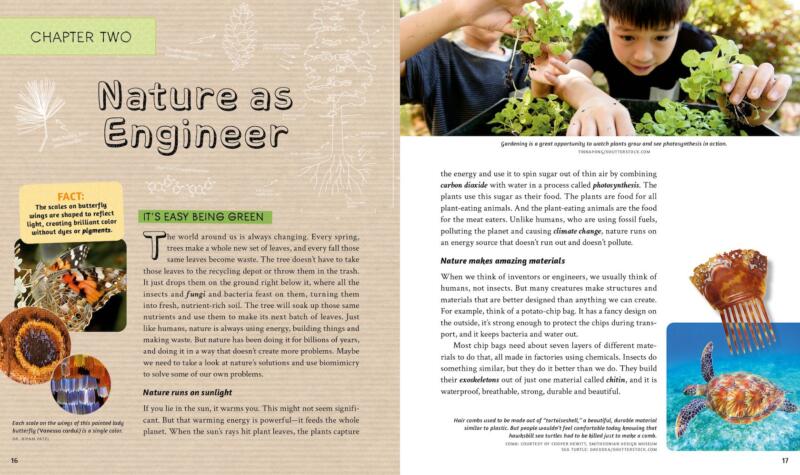
Design Like Nature has an attractive, colourful layout. Multiple pictures with captions capture the attention of young readers, and the text is clear and concise with well-defined subheadings. Coloured text-bubbles highlight fun facts, and further explorations for the reader. Key words that children may be unfamiliar with are outlined in bold and explained in a glossary, and the list of resources is kid-friendly. This book is excellent introduction to biomimicry that will be useful for classrooms, home-schoolers, or parents looking to introduce these important concepts to their children.
*
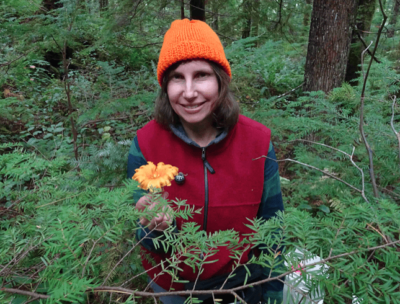
Jocie Brooks studied classical piano, and has a Bachelor of Music degree from the University of Victoria. She works as a piano teacher but moonlights as a nature nerd, with keen interests in birds, botany, fungi and conservation. Jocie enjoys reading and writing, and wrote a nature column in the local paper for many years. She lives in the Comox Valley with her two children.
*
The Ormsby Review. More Books. More Reviews. More Often.
Publisher and Editor: Richard Mackie
The Ormsby Review is a journal service for in-depth coverage of BC books and authors. The Advisory Board consists of Jean Barman, Wade Davis, Robin Fisher, Cole Harris, Hugh Johnston, Kathy Mezei, Patricia Roy, Maria Tippett, and Graeme Wynn. Scholarly Patron: SFU Graduate Liberal Studies. Honorary Patron: Yosef Wosk. Provincial Government Patron since September 2018: Creative BC
“Only connect.” – E.M. Forster
3 comments on “1288 Burrs and bullet trains”